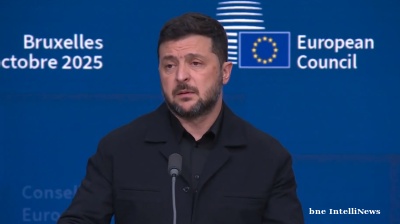Romania’s ministry of energy and the management of state-controlled nuclear energy company Nuclearelectrica rejected on November 4 concerns previously expressed by Nuclearelectrica minority shareholder Fondul Proprietatea (FP) about the planned €7.2bn expansion of the Cernavoda nuclear power plant.
Romania wants to develop two additional 700MW reactors at the Cernavoda nuclear plant under a long-term contract for difference (CfD) arrangement. Plans to build the third and fourth reactors at the country’s sole nuclear power plant were relaunched recently by Nuclearelectrica and the government, after the project languished for years and potential investors pulled out.
The government has lined up China General Nuclear Power Corporation (CGN) as its partner for the project. It hopes to reach an agreement similar to the Hinkley Point C deal in the UK. Nuclearelectrica’s CEO Daniela Lulache said in October that she expects the agreement with CGN to be ready by December 20.
The project company should be set up early next year. Nuclearelectrica will contribute the existing facilities dedicated to the two new reactors, evaluated at €1bn, to the project company, and its Chinese partner will hold the majority stake in the project.
The government wants to include the project in the country’s 2016-2030 strategic plan for energy (SNE 2016-2030), which is currently being drawn up. However, FP fears that the expansion plans could depress Nuclearelectrica’s shares. FP’s criticism will not affect the government’s plans for the expansion since it only holds a minority stake in Nuclearelectrica, but it points to the need for transparent management of the company and of the project, and of thorough technical evaluation of the project in the context of SNE 2016-2030.
The project “is not feasible and could be value destructive for Nuclearelectrica’s shareholders”, FP said in a press release on November 3. FP said the strike-price of €82 per MWh mentioned by government officials was twice the current wholesale market price and concluded that “the discrepancy clearly shows that the project is not feasible.”
The strike-price in the similar Hinkley Point C project in the UK, sealed this year, was set at £92.5 (€103.87) per MWh. Similar concerns were raised by critics of the British project. The strike price is twice the wholesale electricity price, but “if the Competition Commissioner believed the deal is contrary to EU law, he would not have approved [it],” the UK Nuclear Industry Association (NIA) said in 2014. NIA also compared the strike price of Hinkley Point C with the higher strike prices of offshore wind farms and large solar farms.
The energy ministry and Nuclearelectrica have argued that the project will increase the country’s energy self-sufficiency, improve the stability of the national power grid and help the country meet its low-carbon targets, while at the same time making use of Nuclearelectrica’s existing assets and generating revenues for Nuclearelectrica.
Nuclearelectrica admitted in its press release that the high strike-price guaranteed by the state under the contract is double the current market price. However, it stressed that this price is the European Commission’s forecast for the average price in the 2030-2050 period, taken as an initial benchmark in negotiations. The strike price will be subject to further negotiations before the signing of the deal and will be periodically revised once the plant starts functioning in case it results in rates of returns above target, Nuclearelectrica added. The power company also argued in favour of incentives for nuclear power as a fix to the market distortions generated by the incentives given to green energy sources.
The main risks identified by bne IntelliNews stem from the state’s weak capacity to manage such complex projects in the long-term and in a predictable manner. Properly designed and implemented strictly in line with the initial design, the deal could address these risks. Romania’s experience with the frequent changes to green energy legislation raises questions. Furthermore, the fundamental feasibility of the project has not been proven, although there are some relevant arguments in favour such as the closure of outdated capacities, and the existence of a trained workforce and local uranium suppliers.
The press releases issued by the ministry and Nuclearelectrica on the €7.2bn project show that neither are acting according to their allotted roles. The government has not clearly separated its role of policy maker from the role of majority shareholder, when planning to use Nuclearelectrica to pursue energy policy objectives. Separately, Nuclearelectrica’s CEO Daniela Lulache seems to be speaking in the name of the state rather than for the benefit of the company’s shareholders when mentioning workplace creation and country’s energy security (rather than shareholders’ gains) as benefits of the project. This type of confusion could lead to flaws in the design of the project.
In turn, FP’s manager Franklin Templeton has shown no interest in investments. Templeton is being pushed by the fund’s owners to quickly monetise the fund’s portfolio. Capital-intensive long-term nuclear power projects, feasible or not, are beyond such an disinvestment strategy, however legitimate might it be. FP’s November 3 press release fails to demonstrate the lack of viability of the €7.2bn project, though it does make a point on the need for transparency.
News
Category 5 hurricane Melissa bears down on Jamaica with Haiti and Cuba in storm's path
A catastrophic Category 5 hurricane was bearing down on Jamaica on Monday, October 27 afternoon with sustained winds of up to 282kph (175mph), threatening to become the strongest storm the Caribbean island has ever experienced.
.jpg)
US senator tells Maduro "head to Russia or China" as warships close in on Venezuela
A senior US Republican senator has warned that Venezuelan President Nicolás Maduro's time in power is running out and suggested he leave the country, as military tensions in the Caribbean continue to escalate.

Milei celebrates resounding victory in Argentina's midterm elections
Argentine President Javier Milei scored a major win for his La Libertad Avanza (LLA) party in Argentina's October 26 midterm legislative elections, as the party obtained approximately 40.84% of the nationwide vote with 99.14% of the votes counted.

Zelenskiy accuses China of aiding Russia’s war effort through industrial and military support
Ukrainian President Volodymyr Zelenskiy accused China of materially supporting Russia’s military-industrial complex, providing key technologies and resources that have enabled Moscow to sustain and scale its war effort against Ukraine.




